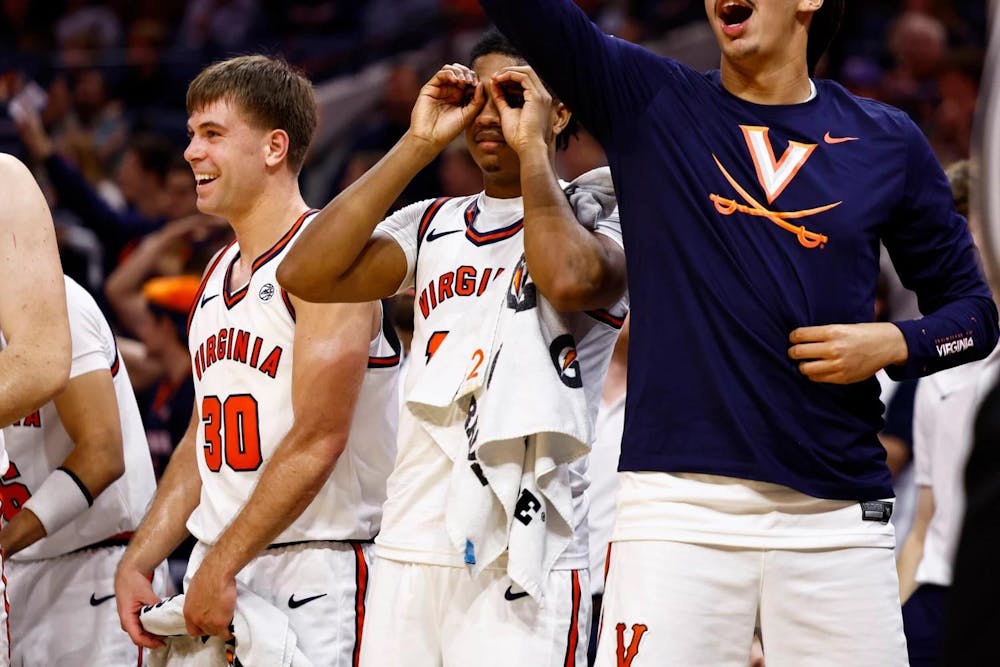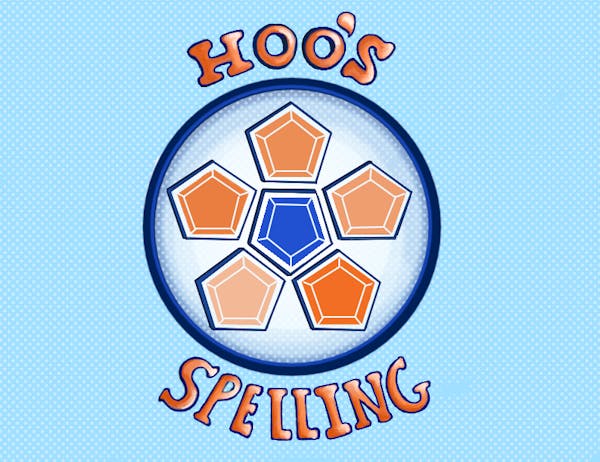Virginia basketball in recent memory has played so slowly that the best adjectives are nouns. The mental list of adjectives fails, and so does a thesaurus of them. People resort to naming creatures.
“Like a snail,” third-year College student Alex Heyman said.
“Sloth,” third-year Engineering student Ben Lawrence settled on.
Those descriptions came from people casting their minds back during halftime of Virginia’s 87-53 season-opening win Monday against Rider, up in the sleepy concourse. The last time Virginia played Rider, it was 2009, and the score was 76-49. Former Coach Tony Bennett was three games into his inaugural season. Virginia launched a campaign then of plodding basketball, and for a decade and a half, it never stopped.
It used to be that a spectator could take off his glasses as a player inbounded the ball, polish them, and put them back on, and the ball would barely have crossed half court — or if it had, it would be shuttling methodically around on the perimeter. It used to be that a fan had time to respond to a text message as the ball puttered upcourt.
Not anymore. The tortoise has become the hare.
Fast basketball?
“It’s an enigma in this state,” third-year College student Blake Cabral said during Virginia’s exhibition game against Villanova.
Coach Ryan Odom, the new steward of a program only accustomed to one way of playing, is here with his own style. No fan has seen anything like it from the home team in John Paul Jones Arena for 17 years. Virginia basketball does not look like, well, Virginia basketball. It has made for a disconcerting return to JPJ, even for the fans who expected it.
“This is just a completely different style,” Bob Morrow, a 79-year-old fan, said Monday, leaning over the railing to the press section. “This is obviously more exciting to watch, but for a purist, it was good to watch Bennett.”
Morrow’s seat is a folding chair at the edge of the concourse. From his position behind the basket, he can take in the whole game without really turning his head. But for fans stationed along the sideline, it felt Monday like they got zapped over the offseason into a bobblehead.
Some teams in college basketball play like a rabbit with the police in pursuit. Odom’s teams may not have ever historically darted up and down the court to the extreme. But his teams ranked anywhere from 111th to 292nd nationally in tempo over his time at VCU and Utah State. Virginia, meanwhile, ranked 364th last year, fourth to last.
Fans still got one dose of familiarity Monday, in the form of a shot-clock violation. Everyone acquainted with the program has treated such moments, since Bennett’s beginning, as enormous sources of pride. The fans erupted and patted their heads ferociously.
Odom, in the opening statement of his postgame press conference, chastised his team for not sustaining its defense for the entire shot clock more often. The fans, he said, were waiting for it.
“We have to get teams deeper into the clock,” Odom said. “Trust me, the fans, they will know what to do at the end. Now, we have to get them used to some of the other stuff on the other side, and that’ll be a learning curve for them.”
Try five-second possessions. Try an entire play where the ball hits the court one time, zipping from a guard’s hands straight to a player on the three-point line that shoots immediately. Try passes and shots and so many three-pointers.
“I've kind of known it'd be more uptempo,” Cabral said. “I didn't know that we would be shooting threes on literally every single possession.”
Not only is it a different experience, it is a new identity. Being a fan of this program used to be almost a character trait for any fan. The more criticism the old system got, the more it made many fans love their team. Outsiders pincushioned the system — it was like watching paint dry, they said, like watching teeth getting pulled. That only made fans draw closer together and wall up against the attackers outside.
“The outside noise, [the criticism] that that's not real basketball,” Morrow said. “That only made you support it more.”
But there are cosmetic benefits to this new style. Almost everyone made room for one word, floating around the concourse and through the streets Friday — exciting.
“When it's moving a lot more, it's easier to stay focused on the ball,” third-year College student Josh Kelner said. “It's more exciting to see explosive plays happening, and not just seeing people take shots at the last second.”
Morrow’s eyes may be a bit older than those of college students, his seat a little further away. But he said the game was harder to follow. However, what really matters to fans — students, middle-aged, older, three years of experience watching the team or 51 — is the result. Cabral preferred the new speed, with one caveat.
“It [would be] something else if it was fast-paced and we were down 20 points,” Cabral said.
Fans will take some time to adjust. They will wait to wipe their glasses during timeouts. They will send their text messages at halftime. They will readjust to a new identity. Odom is here, and so is fast basketball.
“It's not worse by any means,” Heyman said. “But it's not the usual U.Va. basketball experience anymore.”







